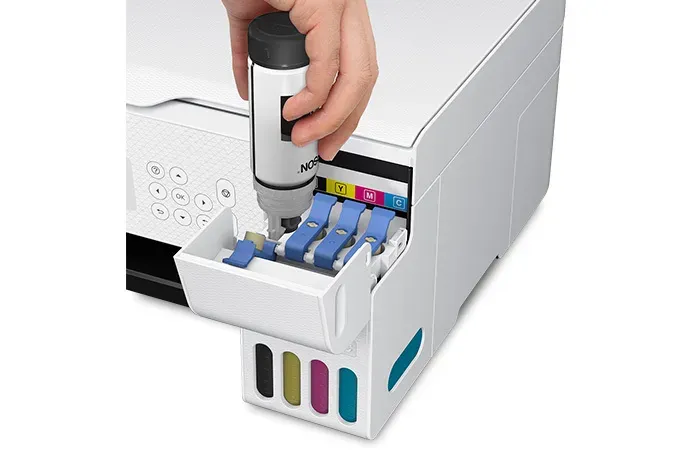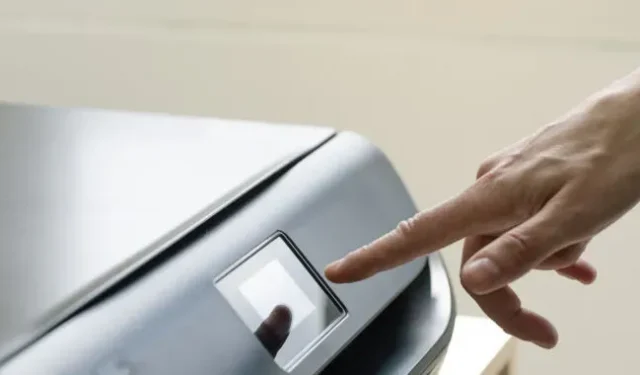There was a time when laser printers were a luxury. High prices pushed them out of the budget of most homes and small businesses decades ago, but they have become more affordable over time. But now printer maker Epson is turning away from this technology in favor of inkjet alternatives and self-proclaimed sustainability.
As The Register notes on Monday, Epson announced last week that it will stop selling and distributing laser printers by 2026, affecting both consumers and business users. The Seiko-owned company is proud to say that the move is in the name of “sustainability,” but the company still has a long way to go in this direction.
Laser printers and sustainability
Epson said in a statement that its decision to focus entirely on inkjet printers rather than laser printers affects the entire planet. And that’s largely based on how laser printers work compared to inkjet printers. Laser printers rely on a laser, drum, toner, and heat to print an image. At the same time, inkjet printers use nozzles to apply ink.
“While laser printers work by heating and fusing toner on the page, Epson’s heatless inkjet printing technology consumes less electricity by using mechanical energy to apply ink to the page,”said Koichi Kubota, Epson’s sales and marketing manager, in your statement. Register.
In a 2021 blog post, Epson said that for comparison, one of its business inkjet printers used “up to 85 percent less energy”and emitted “85 percent less”carbon dioxide than one of its laser printers when printing 20 pages . However, without specific printer models and other details, we can’t be sure if this is an apples-to-apples comparison. Also, discrepancies between inkjet and laser printers from other brands are likely to differ.
Epson also said that its inkjet printers have fewer parts that may need to be replaced than laser ones. Component replacement for inkjet printers is primarily about ink and waste ink containers (nozzle clogging should also be considered), while laser printers may eventually require new toner, drum, developers, fusers, and other components. According to a 2019 Epson blog post found by The Register, Epson inkjet printers have “up to 59 percent fewer parts compared to laser printers.”
Epson’s press release states that because inkjet printers have fewer parts that may need to be replaced, they require less downtime and maintenance than their laser counterparts.
A big problem
Epson’s recent statement touts a “commitment to sustainability”as well as Epson’s planned 100 billion yen (about $722.2 million) investment in “sustainable innovation”- while connecting its latest printers, of course. But the company’s strategic shift doesn’t seem like the big green step that Epson’s public relations team would have you believe.
We don’t need to tell you about the environmental issues inherent in home and business printing. An oft-cited 2012 study found that 375 million ink and toner cartridges end up in US landfills every year, and that doesn’t even include paper and energy consumption.
But people and companies need to print, and printers and their employees need to keep that business going. So we don’t blame Epson for looking for a way to make its printer business greener. But we regret that the company continues to ignore a serious environmental problem related to its business, which it could easily solve.
As we reported in August, Epson has been blocking printers due to supposedly oversaturated ink pads, even though the printer would otherwise physically work. Epson does this because ink can bleed through the printer. But designing products that cease to function, also known as planned obsolescence, is a big no-no for green technologies. We shudder at the thought of the number of working Epson printers that have been thrown into the trash by less technical users who didn’t know the device was still usable.

This kind of one-time thinking is alarmingly common in the printer industry. For example, in 2020 HP blocked ink cartridges outside of its Instant Ink subscription program and also used DRM to block other manufacturers’ ink cartridges from working in HP printers.
User frustration
Despite concern for the environment and consumer choice, Epson continues to produce printers capable of doing what the user demands. And it also leads to user frustration when printers suddenly stop working for seemingly no reason (and this always happens when you need to print something). Printers have no experience with seamlessly implementing these processes behind the scenes. Earlier this year, Canon, for example, inadvertently broke its ink cartridges in an attempt to prevent third-party ink from being used in its products.
Epson updated its support page this summer to make it easier for users to reset their printers so they keep working and highlight their recycling program.
But despite this month’s renewed commitment to protecting the environment, the aforementioned issues have not been resolved at all. As numerous video tutorials show, repairs such as replacing an ink pad can be done by tech-savvy people, but finding Epson repair manuals, parts, or Epson tools for Epson printers is next to impossible. For example, the company recommends having one of its partners replace ink pads, avoiding home craftsmen and local repair shops.


